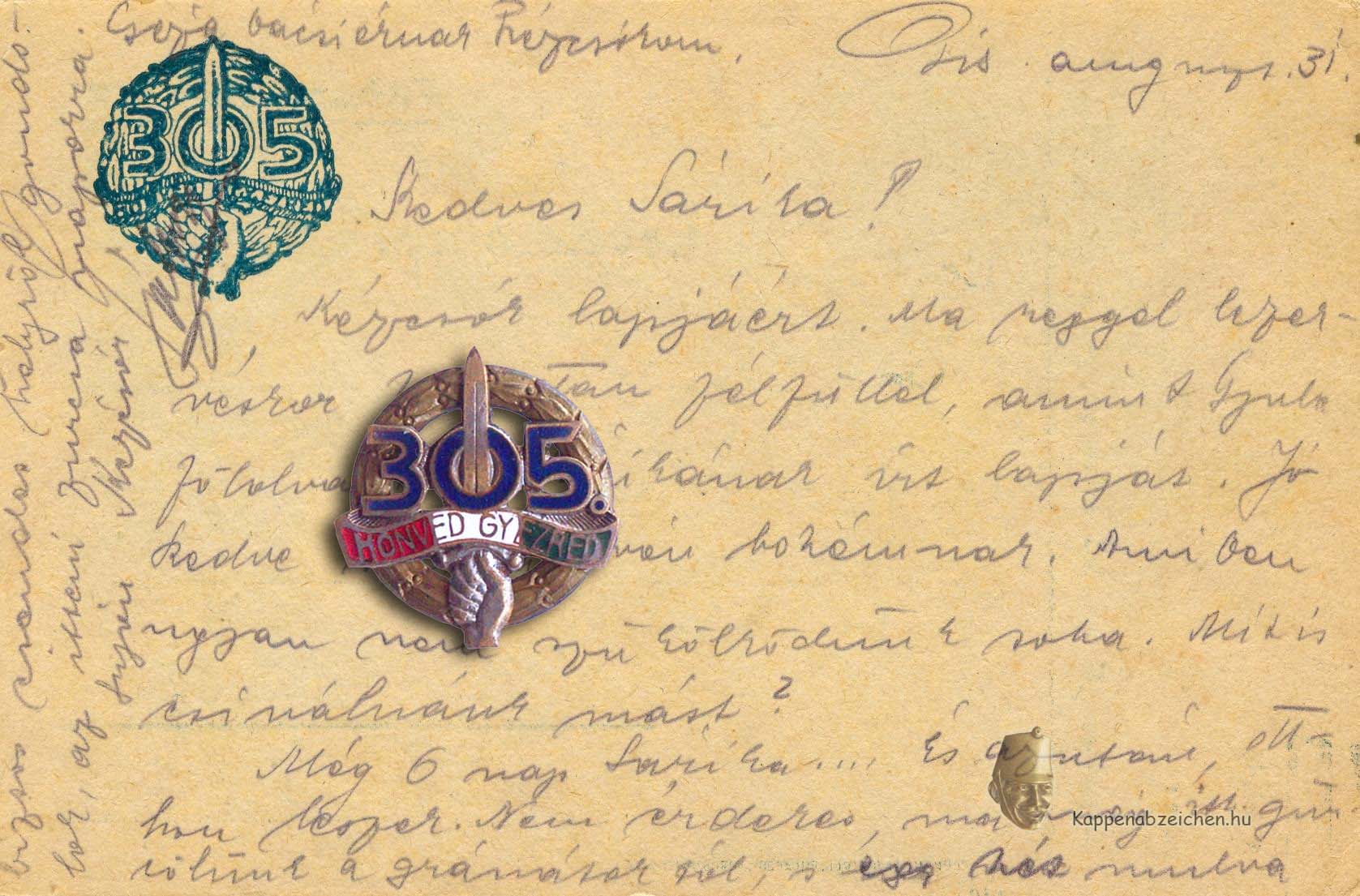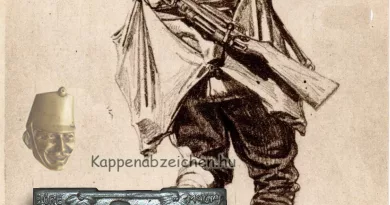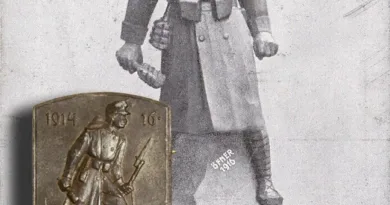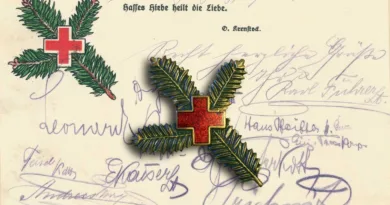HIR 305
As the war effort grew, more soldiers and the formation of new units and regiments were needed. The number of honvéd regiments was also increased. First, instead of the four infantry regiments captured in Przemysl, the military command set up new ones. For some reason, the numbering of the new honvéd regiments did not follow the previous ones, but started again with the number 300. Thus, the new regiments created were given numbers between 300 and 316. New divisions were organized from them. The four regiments (2, 5, 7, 8) of the captured 23rd Division were not reorganized. Before the Great War, the staff of the honvéd infantry regiments was made up of conscripts from each honvéd military district. This rule was no longer applied to the new regiments, the staff was mixed. Some of these later organized regiments still had traces in the regimental history volumes published in the 1930s. The cadres of these regiments operated in the cities of the hinterland and through them a significant part of the crew had local connections.

The 305th honvéd infantry regiment was formed in June 1915 from the honvéd battalions of Versec, Pécs and Gyula. The reserve battalion was stationed in Gyula. The regiment operated in the 201st Brigade and the 51st Division during the war. After its formation, the regiment fought in Galicia and from December 1915 in Bukovina. They took part in repelling the Russian offensive in January 1916. During the Romanian attack in 1916, the 51st division was among the first to be transferred to the defense of Transylvania. After their arrival, they took part in the counterattack launched against the Romanians in the southern part of Transylvania, and then in the capture of the Romanian capital, Bucharest. Then they were again in Bukovina. In 1918, they were assigned to the XXIV. Szurmay corps and were sent to the Italian front.

The field postcard, decorated with the regimental insignia, was produced in several color prints. The regiment’s memory, along with several other units numbered 300, is preserved in a memorial erected in Szeged. The large number of regiments shows that mixed troops were formed: the honvéds from Szeged were assigned to 6-7 different Regiments.




